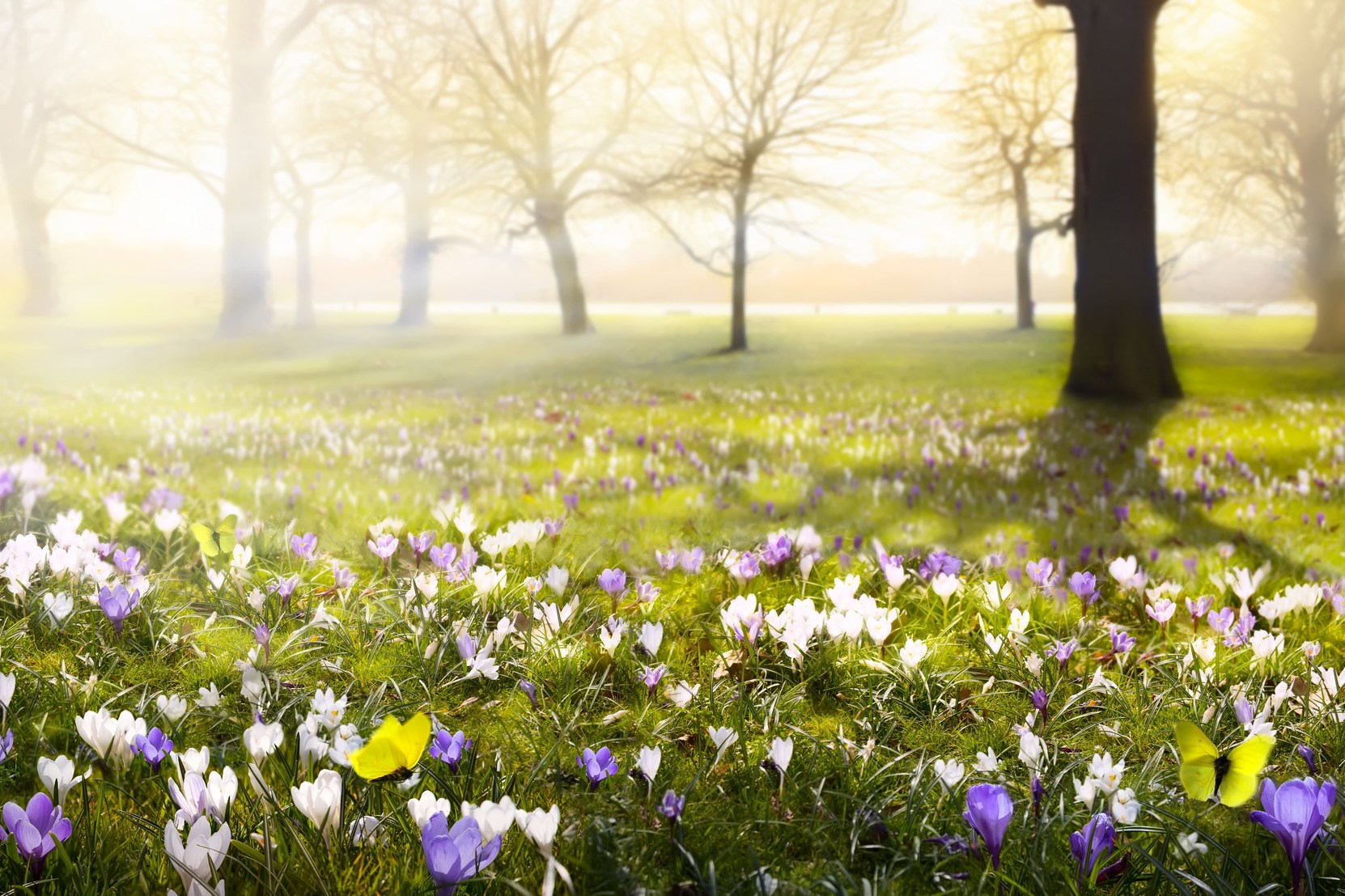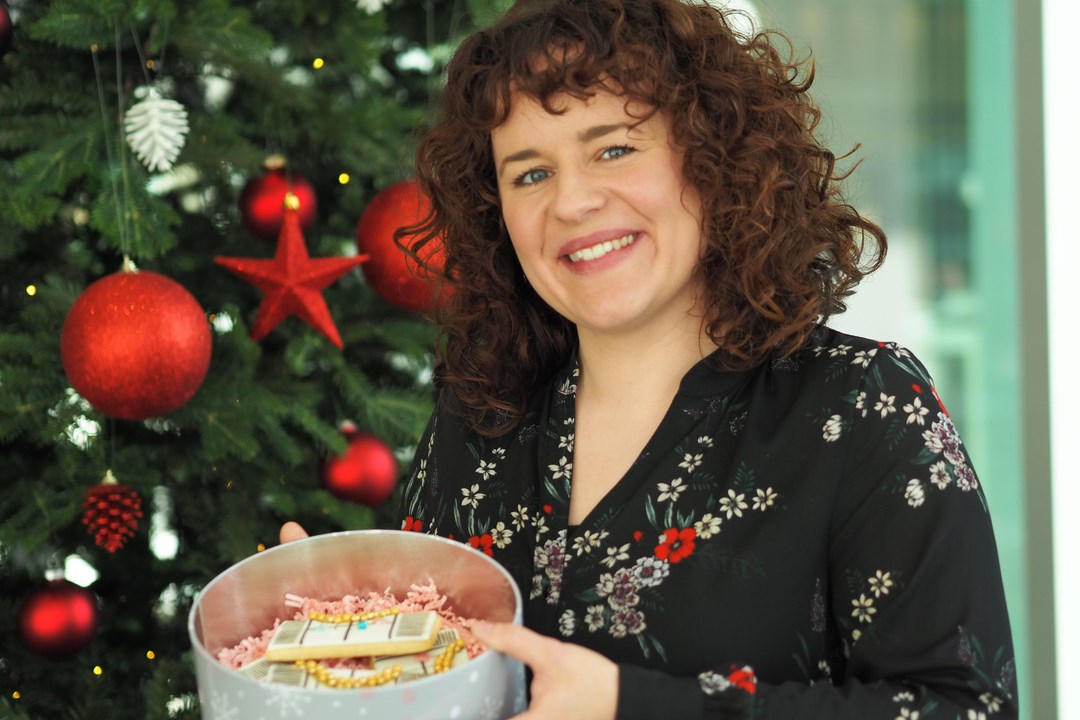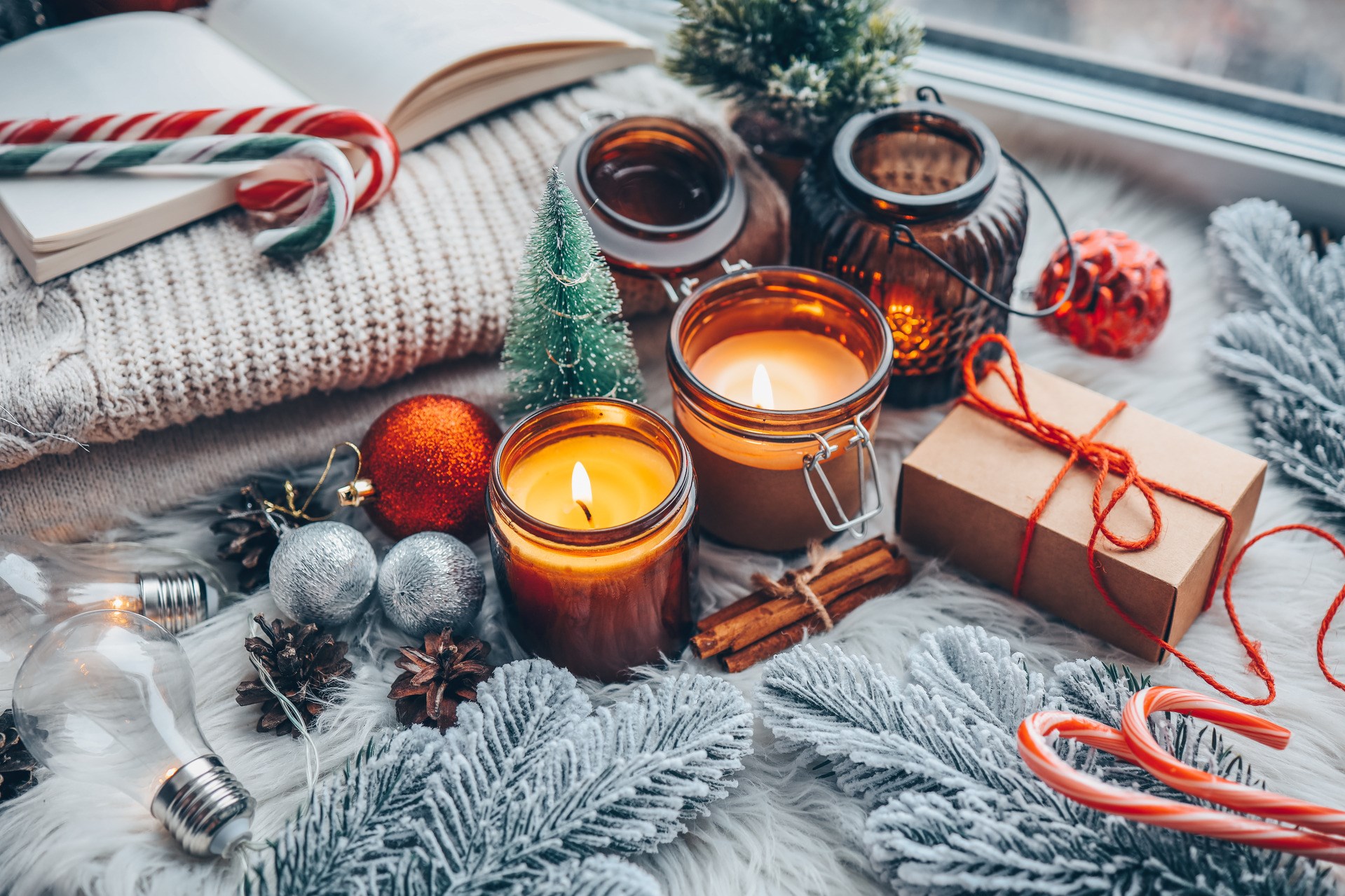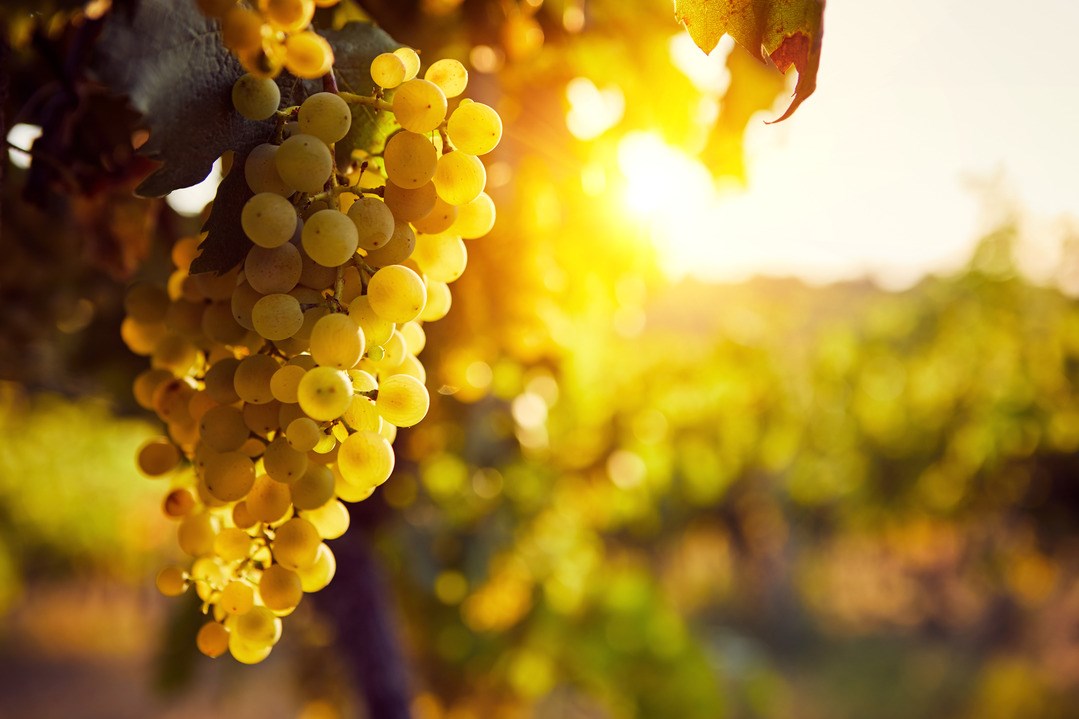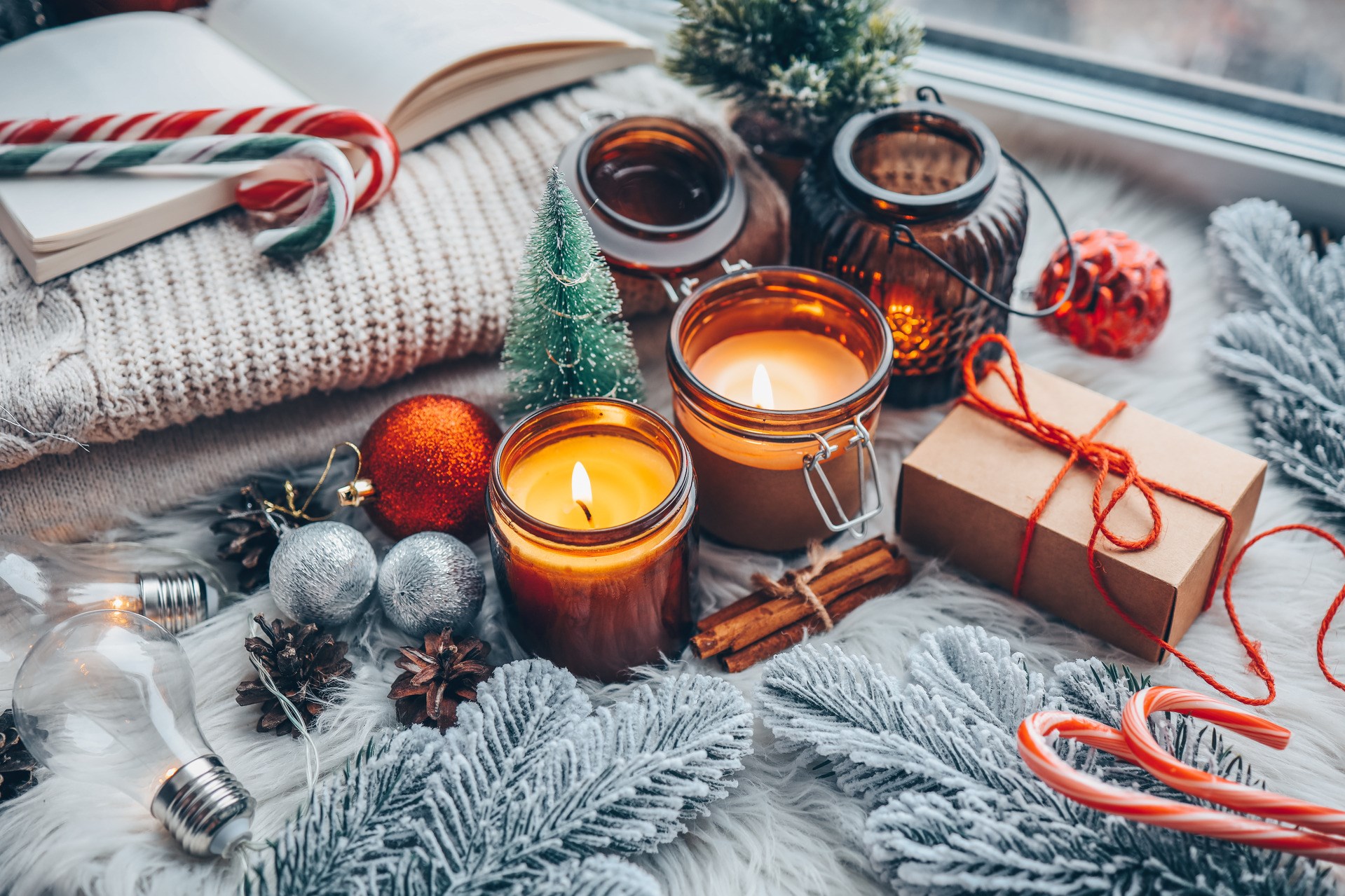
Christmas smells like ...
Topics in this article
Scents play a particularly important role in our well-being at Christmas time. In many parts of Europe, the scent of cinnamon, gingerbread, roasted almonds and the smell of fresh fir branches dominate the Christmas market. In other countries and on other continents, other scents play an important role at Christmas, as every culture has its own olfactory culture.
At this time of year, scented candles with individual Christmas fragrances are therefore particularly popular in many countries. They also give us that cozy feeling at home.
But what do scented candles actually smell like at Christmas? Are they the same scents every year? No, because there are also trends in scented candles that change from year to year.
The most popular fragrances - the classics
The best-known fragrances at Christmas time are also the most popular in Europe and United States. For example, the scent of oranges, cinnamon and fir branches takes almost everyone back to their childhood. And it is precisely these memories that ensure that these top 10 scents make it into our homes time and time again:
- Cinnamon
- citrus fruits
- Fir greenery
- apples
- cloves
- biscuits
- vanilla
- cocoa
- Frankincense
- Candle wax/beeswax
Many innovative fragrances have made new scents for scented candles possible. High-quality synthetic fragrances in particular make new compositions possible. For example, there are candles that smell of marshmallows, pomegranate, oak moss, or maple syrup - fragrances that would be difficult or impossible to produce on a natural basis. Here are a few online finds for a little inspiration:
- Christmas Cookie (vanilla, gingerbread)
- Winter (orange, fir, clove)
- Tinsel Thyme (holly, fresh citrus, birch, musk, pomegranate)
- Feeling Festive (cinnamon, lemon peel, clove, star anise, ginger, vanilla, biscuits)
- Holiday Cookies (vanilla, butter, nuts, musk, whipped cream)
- Christmas Market (cinnamon, fir, lemon, cardamom, amaryllis, star anise)
- Bright Christmas Morning (red berries, blood orange, apples)
- Norse Magic Frigga (myrtle, almond, oriental notes)
Scented candles provide a sense of well-being
Candles have been the only source of light in the home for many thousands of years (since around 3000 BC). And even if we no longer need them as a source of light today, it is hard to imagine a home without them. This year alone, candles worth over 400 million euros are expected to spread their cozy light somewhere in Germany. A not inconsiderable proportion of these candles will also enchant with their wonderful fragrances. Scented candles have probably been around since 1643, the date on which probably the oldest manufactory was founded. They still produce scented candles today under the name Cire Trudon. They have already supplied them to the court of the Sun King Louis XIV. They still find many buyers today, even among celebrities such as Katy Perry & Co.
Scented candles set stylish accents, soothe the senses, and create a relaxed atmosphere. They have an effect on personal well-being - for example by activating, calming and reminding us of wonderful experiences from the past.
The candle should be made from good waxes. The most expensive wax, beeswax, is being used less and less because of its cost. Today, scented candles are mainly made from vegetable waxes such as rapeseed, palm or soya. Mineral wax or paraffin is also used very frequently and allows the candle's fragrance to spread particularly well. Both types of wax are available in different qualities - so unfortunately, they are also of poor quality. It is therefore often worth reaching for a slightly more expensive candle. Although this does not provide 100% certainty, the probability of buying something sensible is higher. And the price of a candle depends largely on the waxes used.
In addition to the perfect wax mixture, the wick also plays an important role.
Wicks made from synthetic fibers are not recommended and are a pretty clear indication that they are cheap and usually not made in Europe. Wooden wicks are also not ideal. Although they make a nice crackling, chimney-like sound, their combustion is more difficult to control and therefore cannot always spread the fragrances ideally. Cotton wicks are ideal as they are 100% natural, guarantee a long candle life and optimize the diffusion of the fragrance.
In addition to the important features, such as the wax and wick used, the fragrances naturally play a special role.
The manufacturer of the scented candles should comply with the European standards for scented candles. In the EU, the law protects candles from containing toxic substances. This applies to both natural and synthetic fragrances.
Cheap candles are often only scented on the outside and hardly smell at all when they are lit. As with perfume, the fragrance pyramid also plays a major role with candles. The top, heart and base notes should be included and harmonize. Candles are available from 1-2 euros up to 250 euros and more.
Do you know what probably the most expensive scented candle in the world costs? The Black Tie, weighing 1kg, costs around 50,000 euros. Insane, isn't it? It exudes the precious scent of black rose, saffron and oud, an essential oil extracted from eagle wood. Incidentally, this is one of the most expensive fragrances in the world.
Most scented candles contain a combination of natural and synthetic fragrances. These are obtained from essential oils and flavor chemicals. A high-quality scented candle only contains fragrances that have been tested and approved for use in candles.
These fragrances develop their odor in two ways. Firstly, through the evaporation of the fragrance from or with the hot wax. Secondly, through the burning of the fragrance oil via the wick.
This already shows how complex the formulation of a good scented candle is. Each fragrance has a different flash point due to its chemical components. This must be taken into account when selecting the waxes and the wick so that the fragrance develops ideally and the candle does not burn too quickly or even completely.
Today, there are well over 2,000 aroma chemicals and essential oils available for composition that can be safely used in candles. Many of these fragrances are also used in perfumes, soaps, lotions and the like. All have undergone safety and health tests and are approved.
- the wick should never be longer than 1 cm. This will give you a cleaner, brighter burn.
- the entire surface of the candle should be liquid before you put it out.
- avoid any form of draught. Air blasts can disturb the flames, resulting in unsightly black spots on the glass.
- extinguish the candle with a candle snuffer or a candle lid to cut off the oxygen supply to the flame. This will minimize smoke development and prevent the smell of burning.
Among other things, we are replacing natural fragrances with synthetic ones in order to protect resources. And we are working on producing nature-identical, synthetic fragrances more sustainably. At LANXESS, for example, we expect to offer all available fragrance chemicals in a Scopeblue variant in the near future. We will produce these from renewable raw materials instead of crude oil, for example, and at the same time ensure that less and/or sustainably generated energy is used in production.
LANXESS supplies various raw materials to manufacturers of scented candles and fragrances. Benzyl benzoate, which plays an important role as a solvent in production, is frequently used. Fragrance raw materials such as Kalama® Cinnamic aldehyde and Kalama® Cyprinal are also often used. They provide warm, cinnamon, spicy and balsamic notes in the fragrances of candles and many other care products.
LANXESS fragrance raw materials are produced in our plants in Nagda (India) using energy from biomass and in Widnes (England) using renewable energy. We also support all projects to achieve our goal of CO2 neutrality.
Stay up-to-date
Curious now? Subscribe to our Inside LANXESS newsletter and stay up-to-date.


